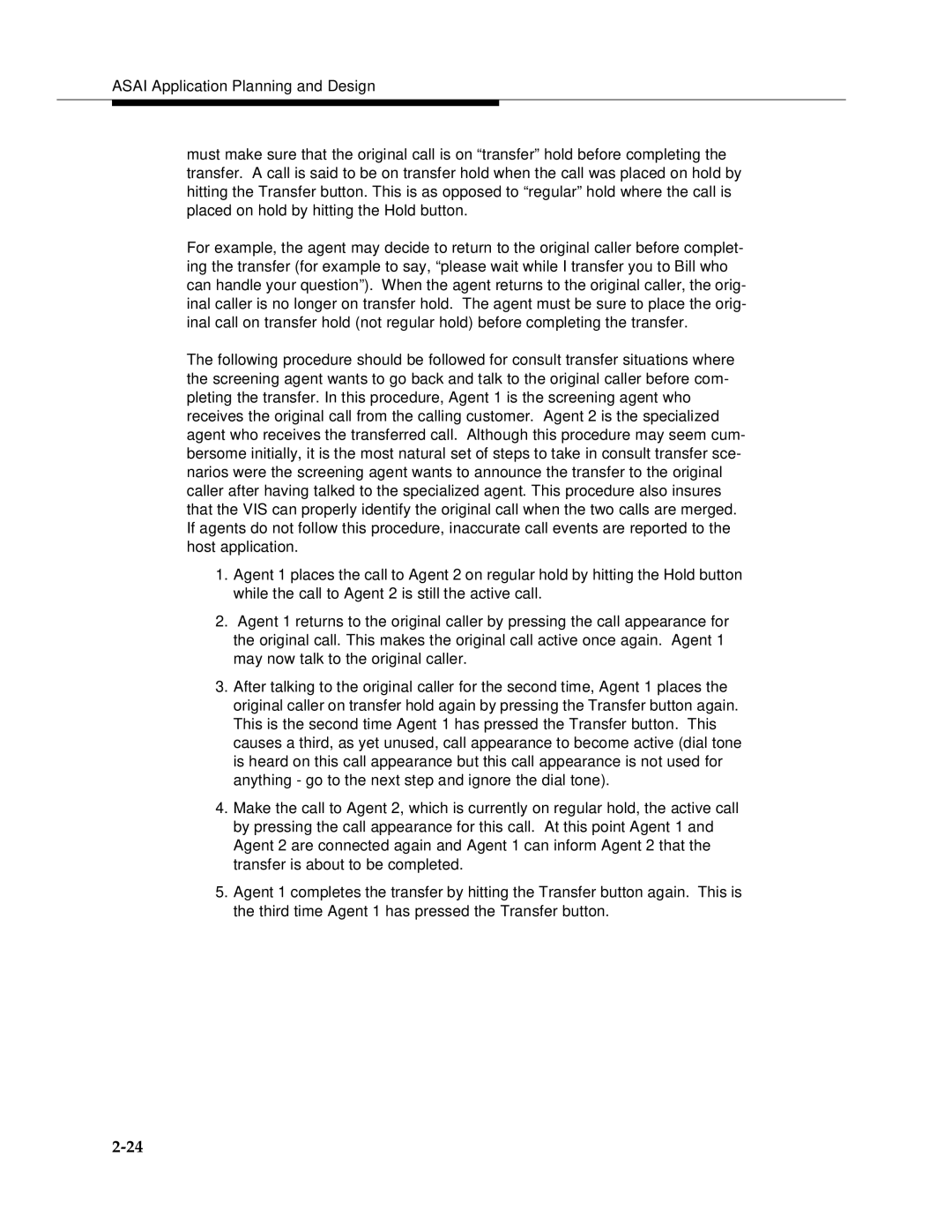ASAI Application Planning and Design
must make sure that the original call is on “transfer” hold before completing the transfer. A call is said to be on transfer hold when the call was placed on hold by hitting the Transfer button. This is as opposed to “regular” hold where the call is placed on hold by hitting the Hold button.
For example, the agent may decide to return to the original caller before complet- ing the transfer (for example to say, “please wait while I transfer you to Bill who can handle your question”). When the agent returns to the original caller, the orig- inal caller is no longer on transfer hold. The agent must be sure to place the orig- inal call on transfer hold (not regular hold) before completing the transfer.
The following procedure should be followed for consult transfer situations where the screening agent wants to go back and talk to the original caller before com- pleting the transfer. In this procedure, Agent 1 is the screening agent who receives the original call from the calling customer. Agent 2 is the specialized agent who receives the transferred call. Although this procedure may seem cum- bersome initially, it is the most natural set of steps to take in consult transfer sce- narios were the screening agent wants to announce the transfer to the original caller after having talked to the specialized agent. This procedure also insures that the VIS can properly identify the original call when the two calls are merged. If agents do not follow this procedure, inaccurate call events are reported to the host application.
1.Agent 1 places the call to Agent 2 on regular hold by hitting the Hold button while the call to Agent 2 is still the active call.
2.Agent 1 returns to the original caller by pressing the call appearance for the original call. This makes the original call active once again. Agent 1 may now talk to the original caller.
3.After talking to the original caller for the second time, Agent 1 places the original caller on transfer hold again by pressing the Transfer button again. This is the second time Agent 1 has pressed the Transfer button. This causes a third, as yet unused, call appearance to become active (dial tone is heard on this call appearance but this call appearance is not used for anything - go to the next step and ignore the dial tone).
4.Make the call to Agent 2, which is currently on regular hold, the active call by pressing the call appearance for this call. At this point Agent 1 and Agent 2 are connected again and Agent 1 can inform Agent 2 that the transfer is about to be completed.
5.Agent 1 completes the transfer by hitting the Transfer button again. This is the third time Agent 1 has pressed the Transfer button.
